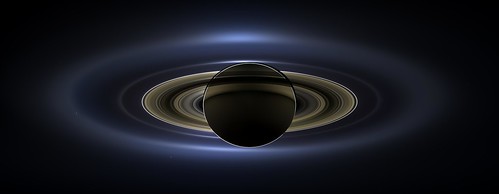Big Bang Monday: 10 Years Gone for Cassini
Monday, June 30th, 2014
Today marks ten years since the Cassini spacecraft arrived at Saturn. The image above is one of my personal favorites (similar images also available via BigBangPrints.com).
The team of scientists at Cassini have selected their own “top 10” list of images. More importantly, their list of the top ten discoveries is far more impressive…
- The Huygens probe makes first landing on a moon in the outer solar system (Titan)
- Discovery of active, icy plumes on the Saturnian moon Enceladus
- Saturn’s rings revealed as active and dynamic — a laboratory for how planets form
- Titan revealed as Earth-like world with rain, rivers, lakes and seas
- Studies of the great northern storm of 2010-2011
- Radio-wave patterns shown not to be tied to Saturn’s interior rotation as previously thought
- Vertical structures in the rings imaged for the first time
- Study of prebiotic chemistry on Titan
- Mystery of the dual bright-dark surface of Iapetus solved
- First complete view of the north polar hexagon and discovery of giant hurricanes at both of Saturn’s poles
I love the preview of what we can expect in the coming years…
